Landscaping with timbers: 12 ideas and tips for your plot
Our clever and varied solutions for landscaping with timbers will help you to transform your outdoor space with style
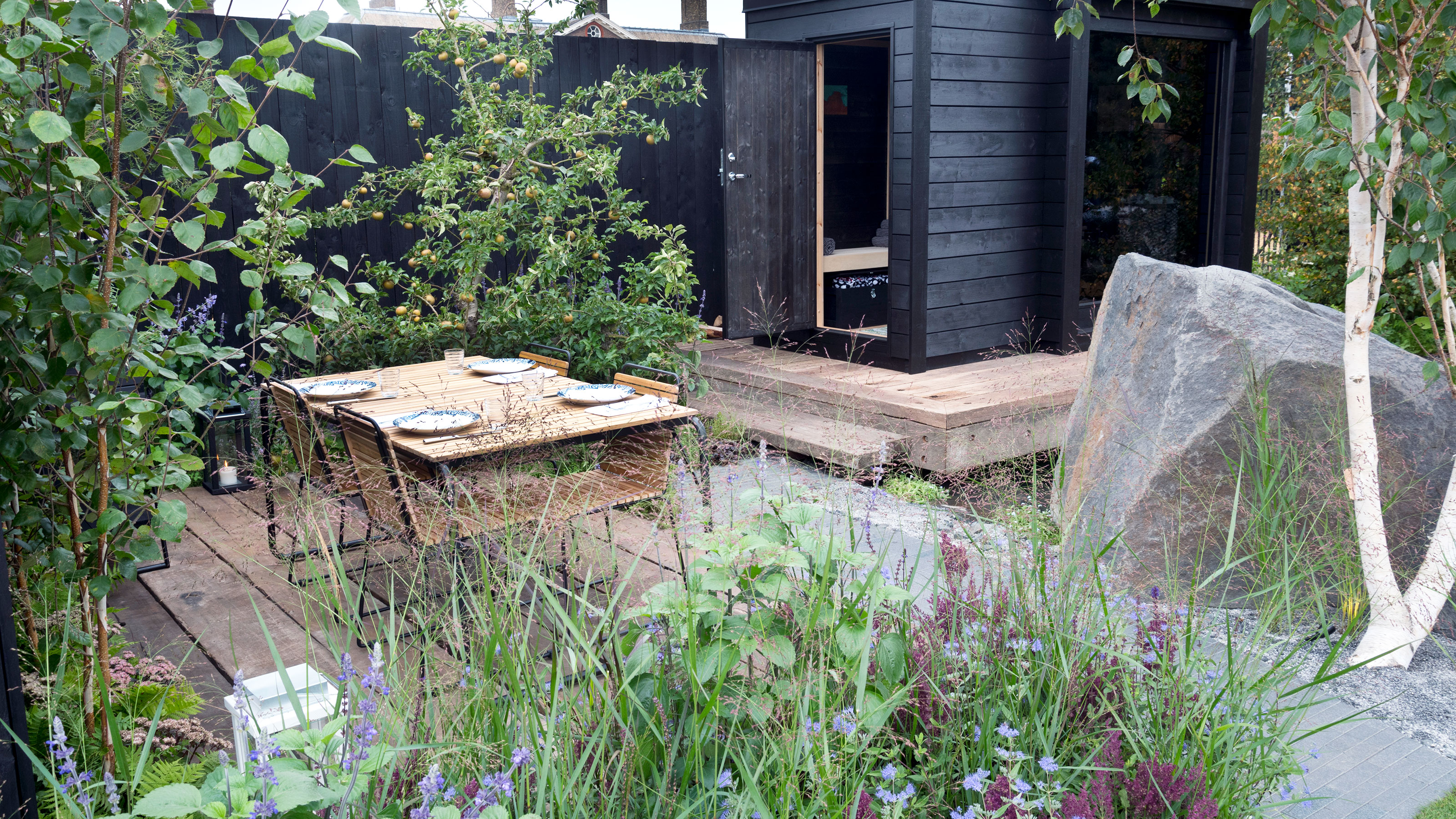

Beth Murton
It's one of the go-to materials for most plots, so landscaping with timbers is guaranteed to help realize your dreams for your perfect outside space. Easy to come by, affordable, pretty durable and simple to work with, timber can simply transform how you use and enjoy your garden, whatever its size, aspect or shape.
Timber can be also be a sustainable choice for your landscaping ideas, and if you choose to use reclaimed, scavenged or locally sourced materials you’ll also have the added satisfaction of knowing you have created something unique and practical with minimal environmental impact. Look for products that are accredited by the FSC (Forest Stewardship Council) to ensure that the timber has been sourced from responsibly managed woodland and forests.
From constructing robust walls, laying decked or timber paved walkways to using lovingly collected driftwood to add character-rich features, there are endless opportunities for landscaping with timbers. Depending on your own personal style and your home climate, you can easily vary the material and finish of your chosen project too for a truly individual flourish.
Give your space a designer edge by landscaping with timbers
Whether you are after inspiration for garden structures, pathways, attractive boundaries or a statement seat, our ideas for landscaping with timbers will get you excited to start planning your next outdoor project.
1. Celebrate the rich tones of timber
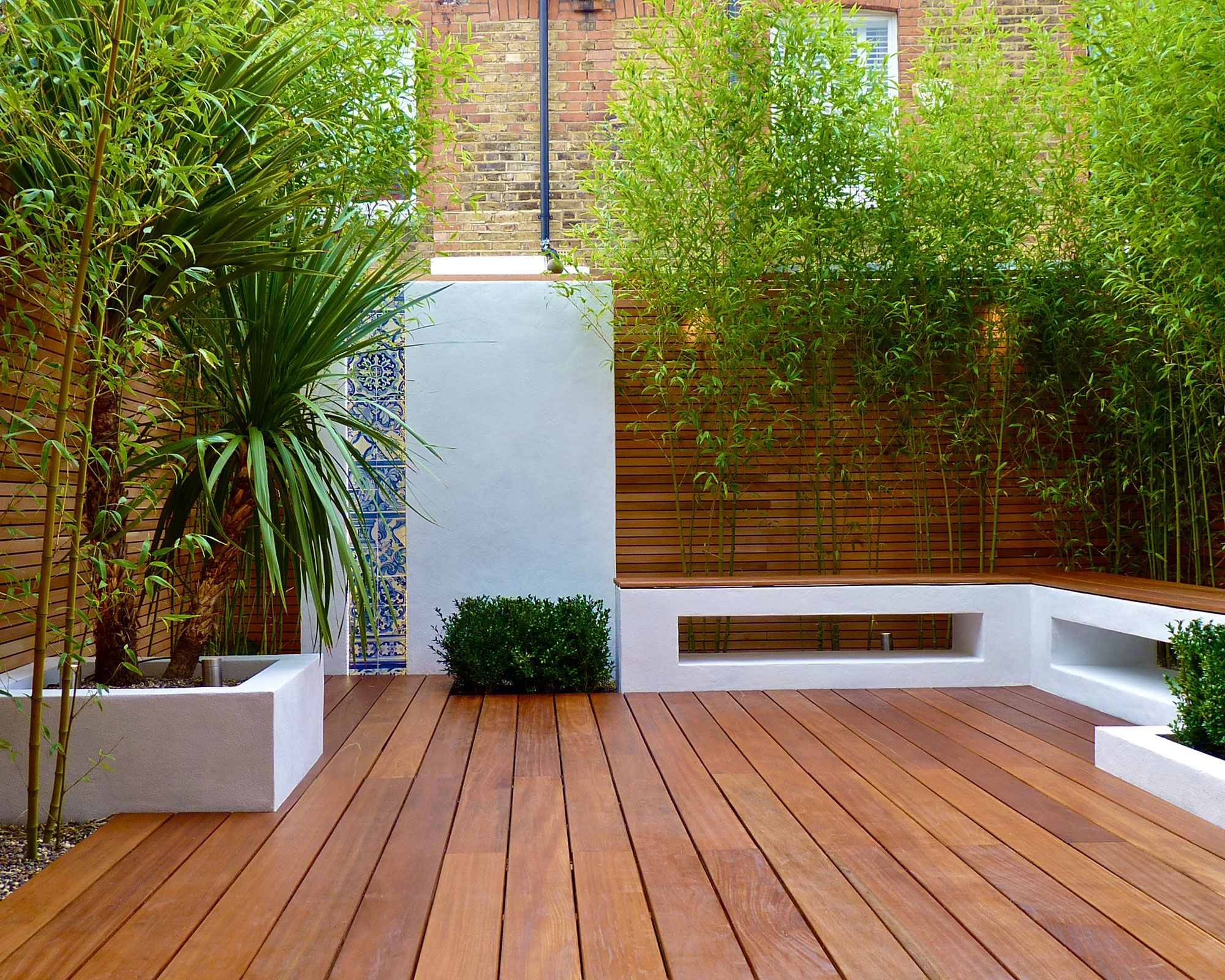
Hardwood decking takes center stage in this project by Cityscapers
Comforting and inviting – you can’t beat the rich tones and dense grain of high quality hardwood decking ideas. Hard wearing and thanks to its natural oils, able to cope with a damp and changeable climate, it’s the perfect material to create low maintenance landscaping for a practical outside space.
In this minimal and beautifully designed urban garden by Nigel Correia Gomme, slatted timber panels enclose the space, and along with the bench seating co-ordinate perfectly with the deckboards.
‘The deck features smooth planed Yellow Balau hardwood decking boards which, contrary to the name, are warm medium brown in color,' says Nigel. 'The wood is FSC certified, an important environmental consideration for us, which means it has been grown and felled sustainably. Aesthetically it is a beautiful material - tough, stable and resistant to our inclement weather and very easy to maintain. An annual rub down with decking oil is all it takes to keep it looking pristine.’
2. Zone your space with timber screens
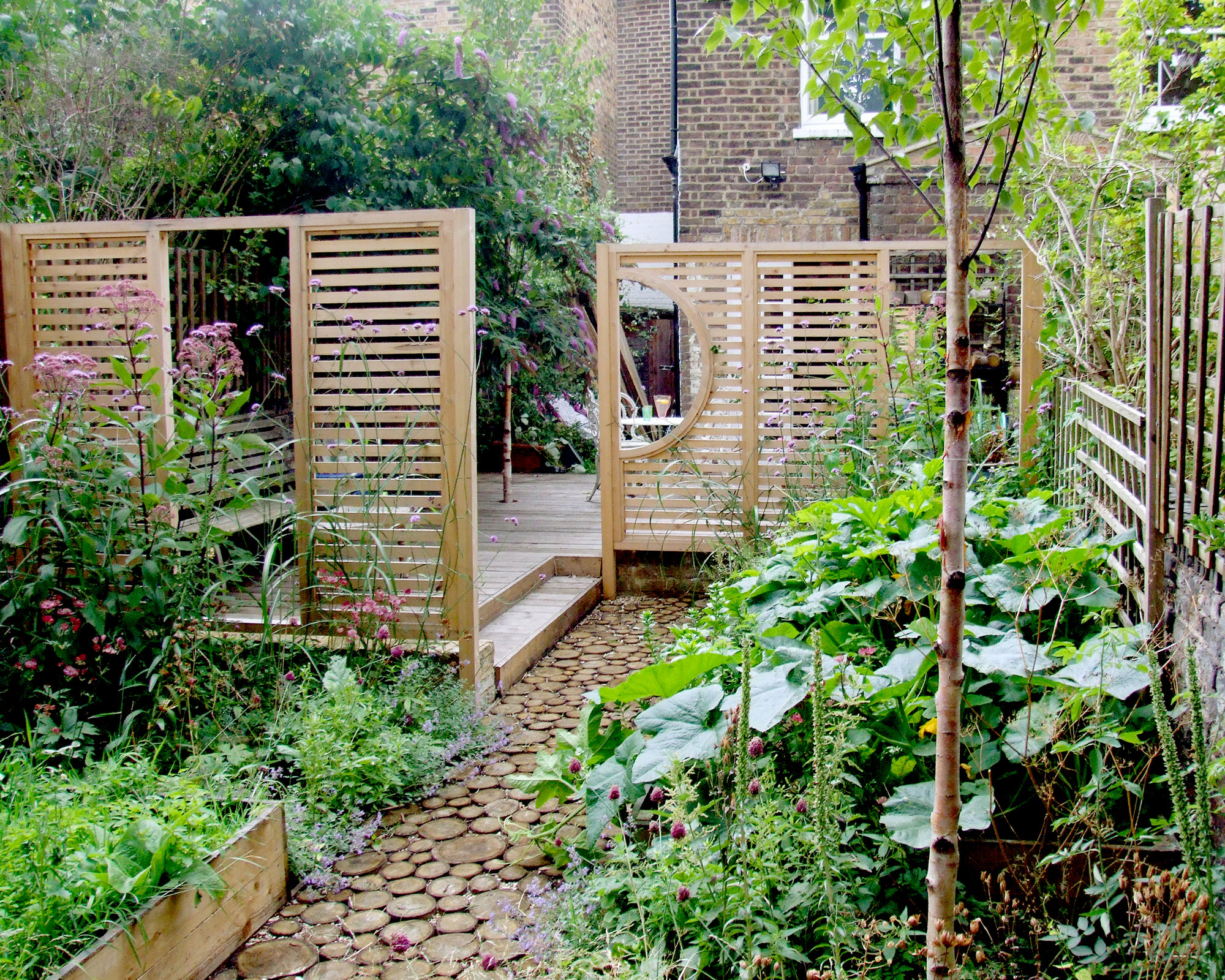
Slatted timbers screens are an effective way to break up the views in your plot, as shown in this project by Adolfo Harrison
Timber screens are a great way to zone your outside space. Adding interest and privacy while still preserving sight lines and letting light filter through, they are a fantastic option for garden screening ideas and are loved by professionals. Use them to cozy up deck and patio areas, and to provide handy wind breaks in exposed sites.
Choose from ready-made wooden trellis ideas, widely available in square or diamond formats in varying sizes, or contemporary ‘hit and miss’ slatted designs. Alternatively devise your own design tailored to your plot as shown in this stylish urban wildlife garden by Adolfo Harrison. Elegantly simple, these screens surround the raised seating area and feature open sections to frame select views of the garden beyond.
Staggering timber screens is another nifty design trick. Encouraging visitors to weave through the space and explore further, it helps to make a small garden look bigger, adding interest and intrigue too. Continue the effect by landscaping with shrubs and slender trees to visually soften the panels and help them bed into the design while further enhancing the effect.
3. Go for a coastal vibe with weathered timber
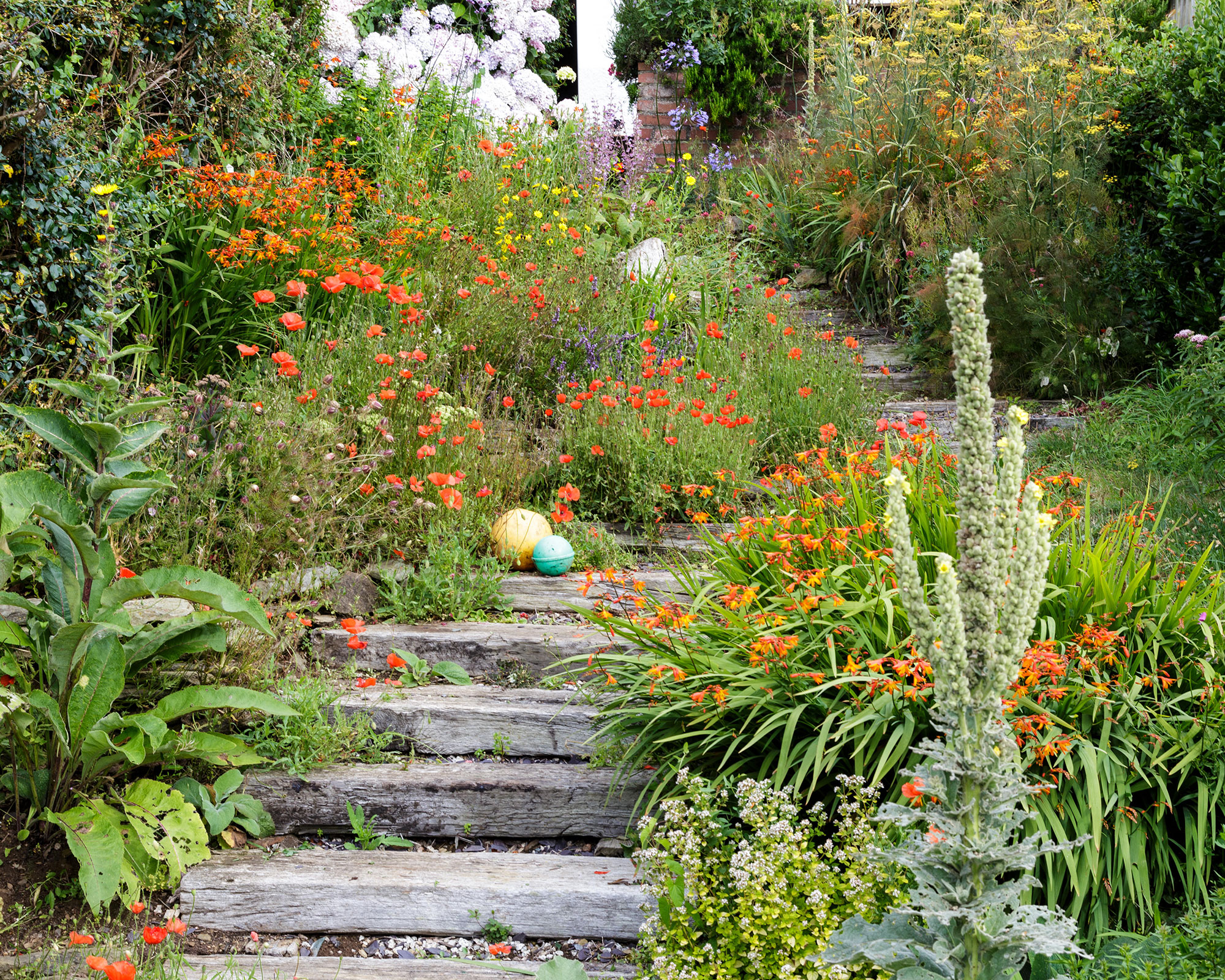
Weathered timber is perfect for adding a rustic vibe to steps and paths
Celebrate the natural, faded beauty of sun-bleached timber by incorporating it into your backyard ideas and teaming it with relaxed and wild-style planting. Perfect for constructing a chunky flight of garden steps winding up through a border, a robust garden boundary or even a series of sturdy monoliths to guide the eye or divide up the space, this naturally weathered material is evocative of wild, coastal style and is a stunning foil for vibrant blooms and foliage.
Scavenged driftwood is great for cheap landscaping ideas and can’t be beaten for character and individual forms, but finding a decent quantity is a tricky business. Take time to gradually collect smaller pieces which can then be mixed in with regular timber or consult local salvage yards and lumber specialists to source larger quantities of reclaimed pieces.
When it comes to choosing plants opt for sprawling ground cover plants such as santolina, sea thrift and valerian and intersperse with taller highlights such as crocosmia and sea holly, then create movement by landscaping with grasses for added interest.
4. Weave timber walkways through the planting
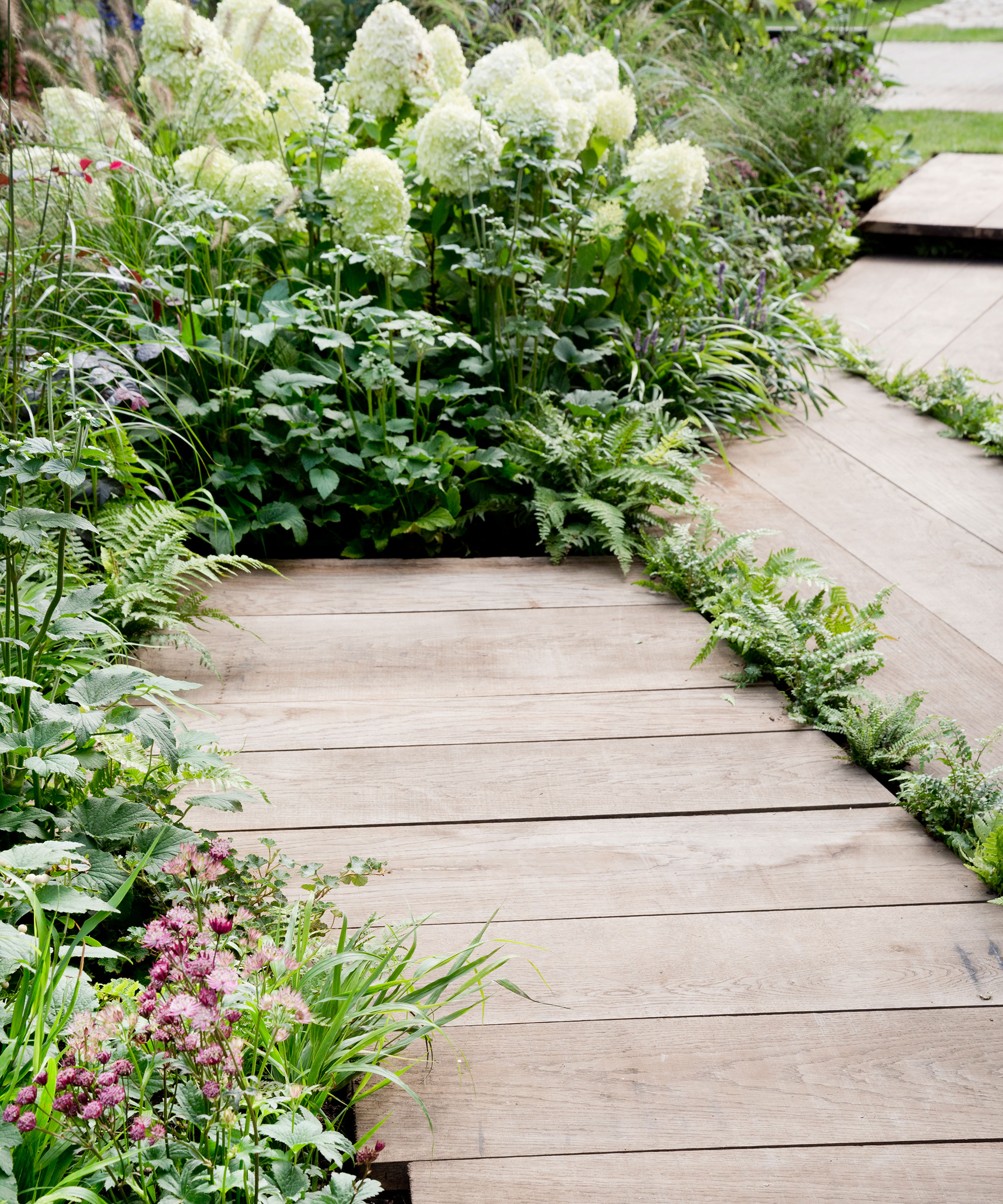
Create an interesting way to journey through your plot with timber pathways
Fancy an outside space where you can explore, meander through planting and feel cossetted by flowers and foliage? Well swap out all or part of the lawn for a series of wooden garden path ideas that twist and turn to create intrigue at every corner.
The beauty of using decking boards is that they are not only hardwearing and durable, but their rich tones and dense grain effortlessly complements lush foliage, creating a truly tranquil atmosphere. Oozing character and conjuring up the feel of warm, tropical climes they are perfectly suited to sheltered urban plots. They are also a great choice when landscaping with hydrangeas, as shown in the pretty plot above.
Laying smooth deck boards on the diagonal is a great trick for visually stretching a space and helps to link the walkways with surrounding planting. It also adds a sense of movement and energy, encouraging visitors to move around and explore further.
5. Mix and match timbers for added interest
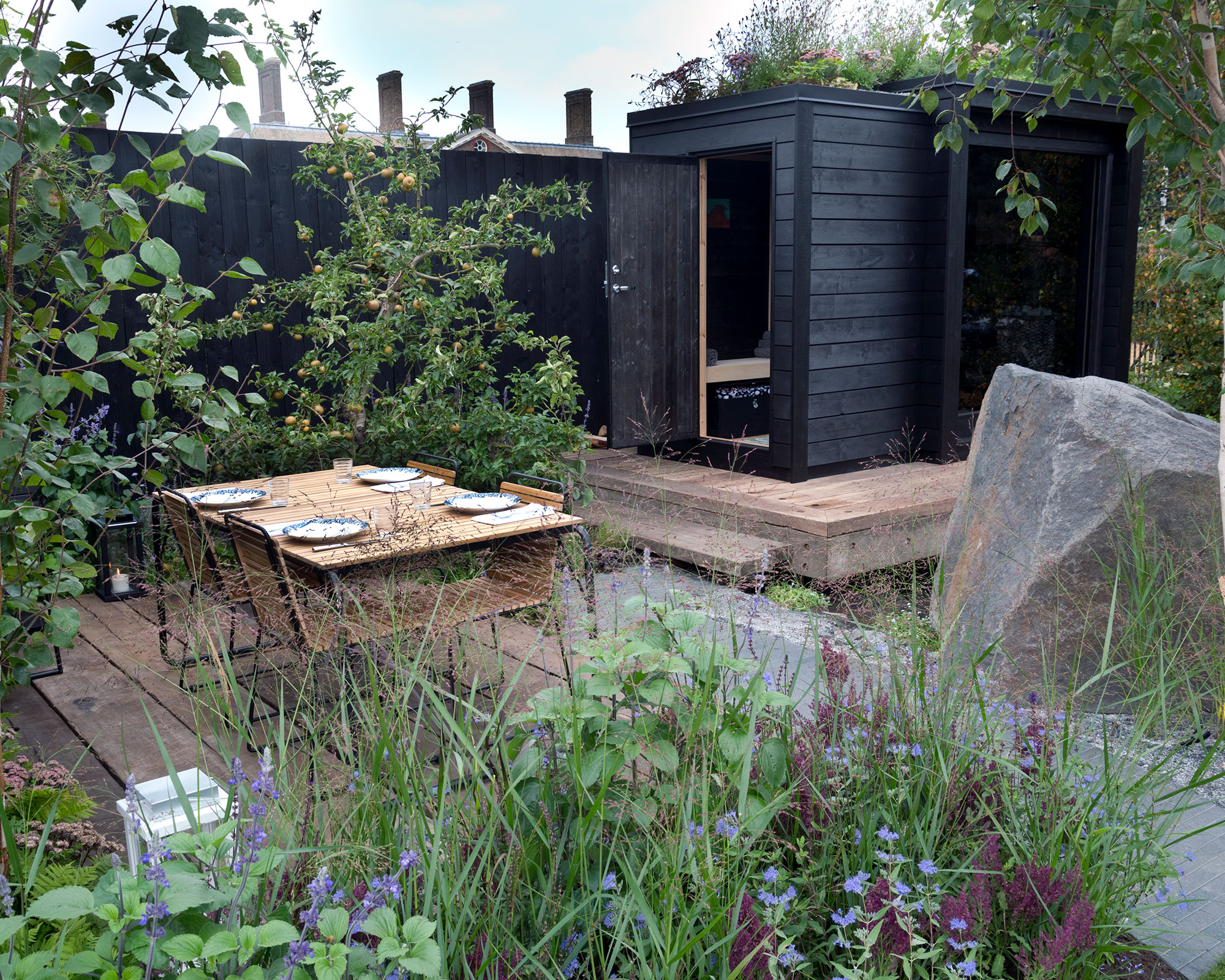
Use areas of painted timber for a smart finish
There are no hard and fast rules when landscaping with timbers, so be bold and include a mix of different colored timber in the same space. It can have a truly transformative effect, adding depth and texture to your scheme.
In this small plot, the black painted garden sauna and fence recede into the background, allowing the trees and foliage to stand out to soften the overall effect. Paler, natural timber used for the base of the garden building and the adjoining patio visually links the two spaces, however, laying the boards in opposite directions helps to create distinct zones and makes the overall plot feel larger.
A final clever touch is to incorporate some landscaping with boulders. A large solitary rock placed at the entrance to the decked outdoor dining space adds to the sense of privacy, creating a more intimate, welcoming setting.
6. Unify zones with timber landscaping
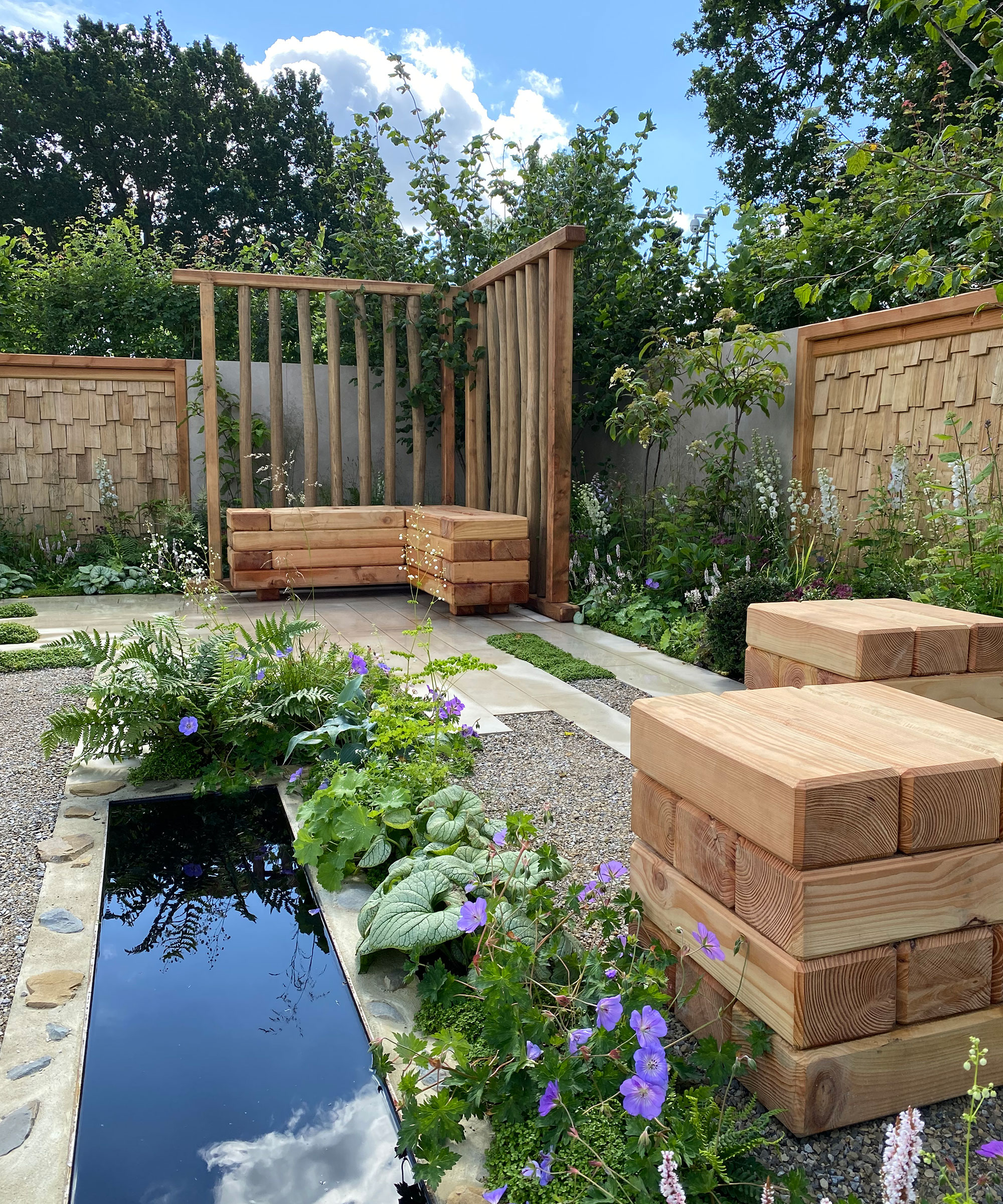
Timber seating will add a timeless look to any plot
Using timber throughout your plot is a stylish way to unify different areas if you chose to repeat similar materials for seating, garden structures and even fencing.
Here, the design of the bench seat is replicated in the two chunky wooden stools next to the pond, while the timber pergola is complemented by the rustic shingle detailing on the garden fence. Subtle differences in the materials used prevent the scheme from feeling too contrived.
7. Use standing timbers to create graceful curves
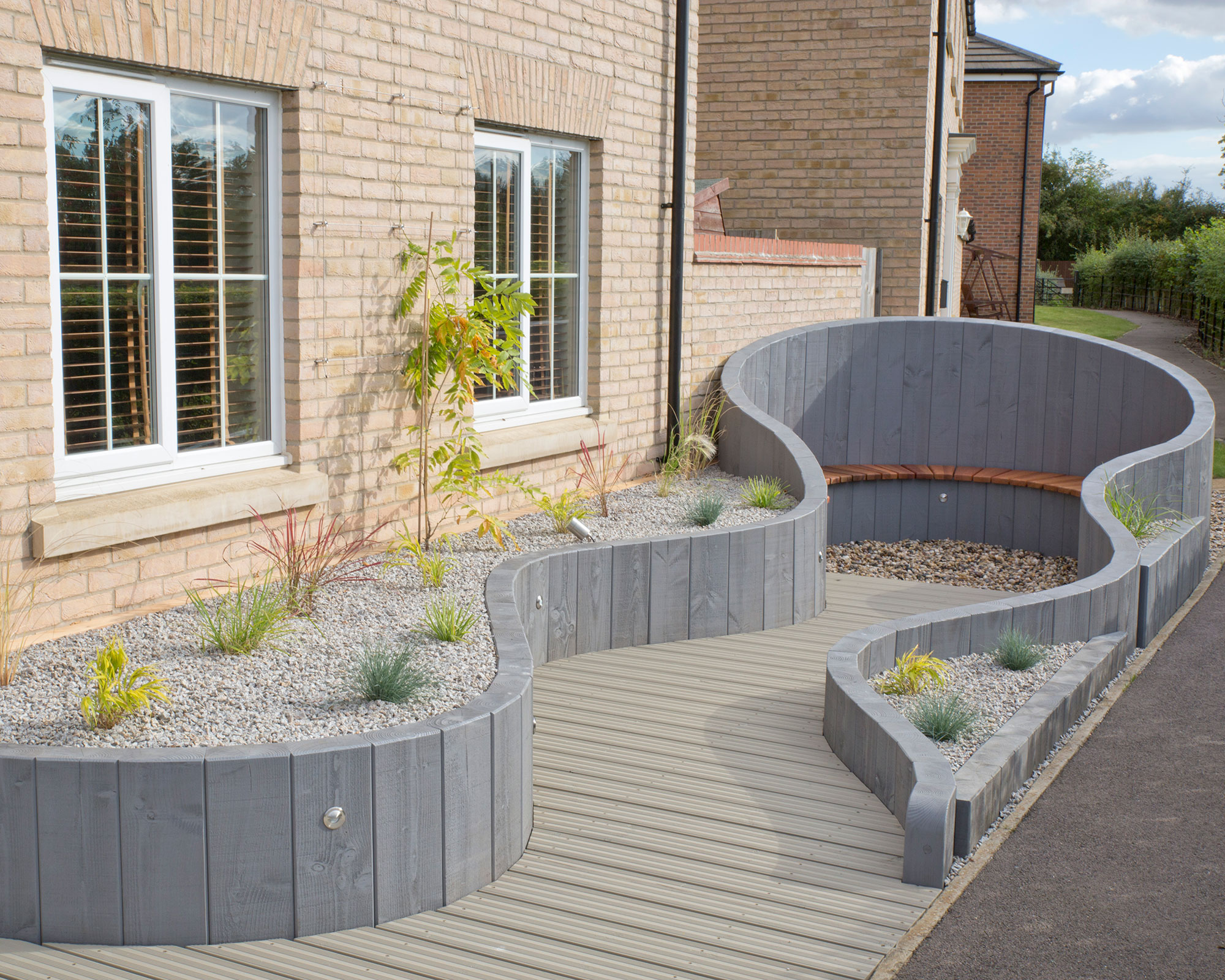
Curved timber walls make this small front garden by X Scapes stand out from the crowd
Standing timbers are great for adding height and structure to any garden, providing they are securely installed. Easy to cut to a desired height, they are hugely versatile and can be used to create staggered or stepped dividers or retaining walls, or gradually sloped for an elegant finish.
Don’t think you have to stick to straight walls or a sharp, right-angled design either. This smooth curving timber wall makes a stunning feature in this front yard landscaping project.
A cozy seating area is beautifully enclosed by a high curving wall – adding both garden privacy and protection from wind – while textured grasses in contrasting colors will mature and soften the overall scheme, while also echoing the sense of movement suggested in the sweeping walkway.
Incorporating landscaping with lights into the overall design highlights the eye-catching design at night, with the subtle LED spotlights transforming it into a practical and social space to enjoy after dark.
8. Choose unique wooden furniture
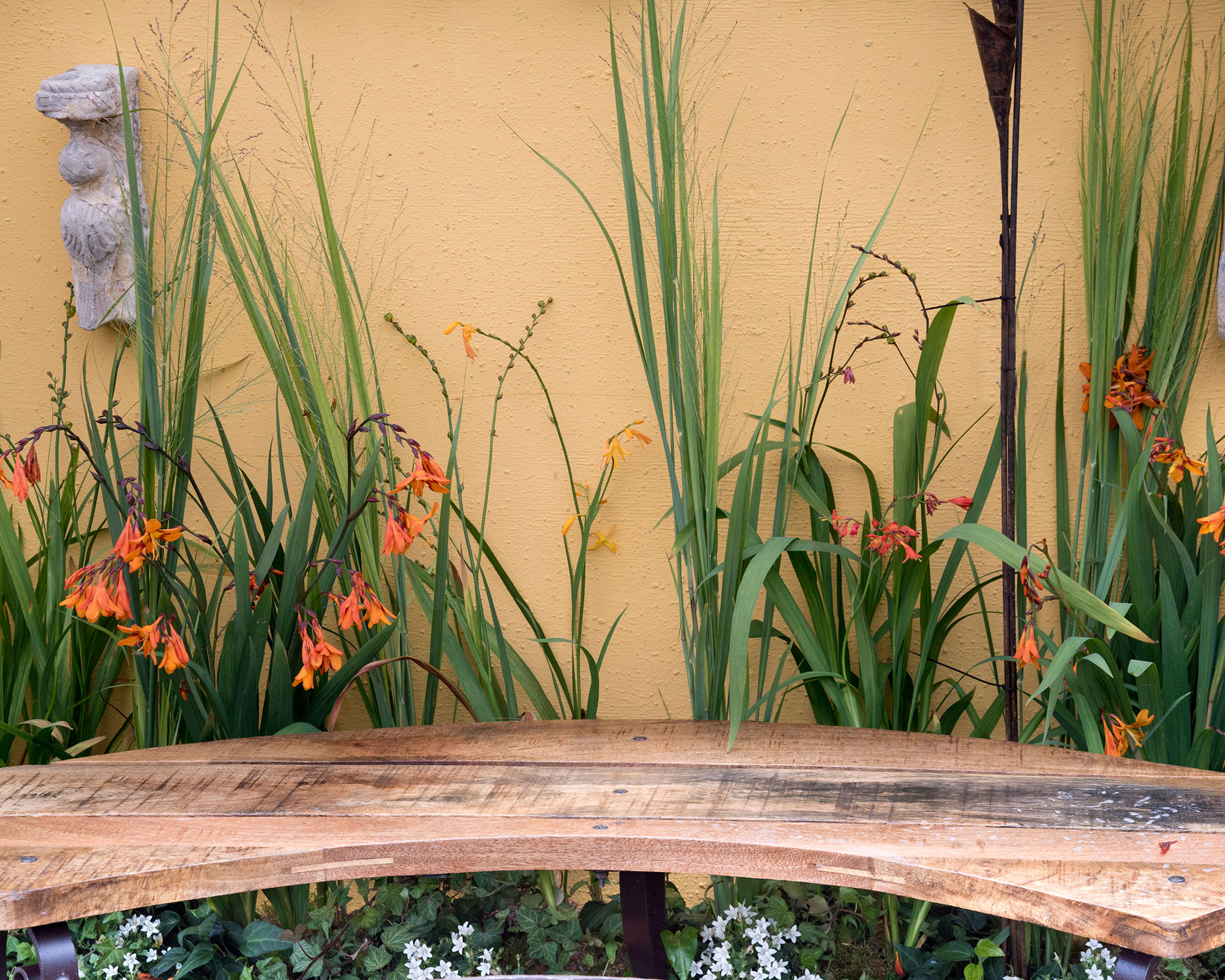
Simple wooden garden furniture will gradually weather over time to add more character to your outdoor space
If you love the warm and tactile appeal of timber, then choose one piece of outdoor furniture to savor and cherish.
Well-crafted wooden stools, garden benches and tables can quickly become favorite places to relax and soak up the charm of your outside space. While the best wooden garden furniture will have a formal elegance, you can’t beat the simple appeal of a lovingly shaped bench or stool. Supremely honest and commanding these designs will sit beautifully in amongst your landscaping with flowers, grasses and leafy shrubs.
Place them against a wall for a sheltered outdoor seating spot, at the end of a winding path, under a favorite tree or overlooking an expansive view or garden pond. Marvel as the timber changes over the seasons and silvers with age.
9. Add texture to landscaping with sawn log paving
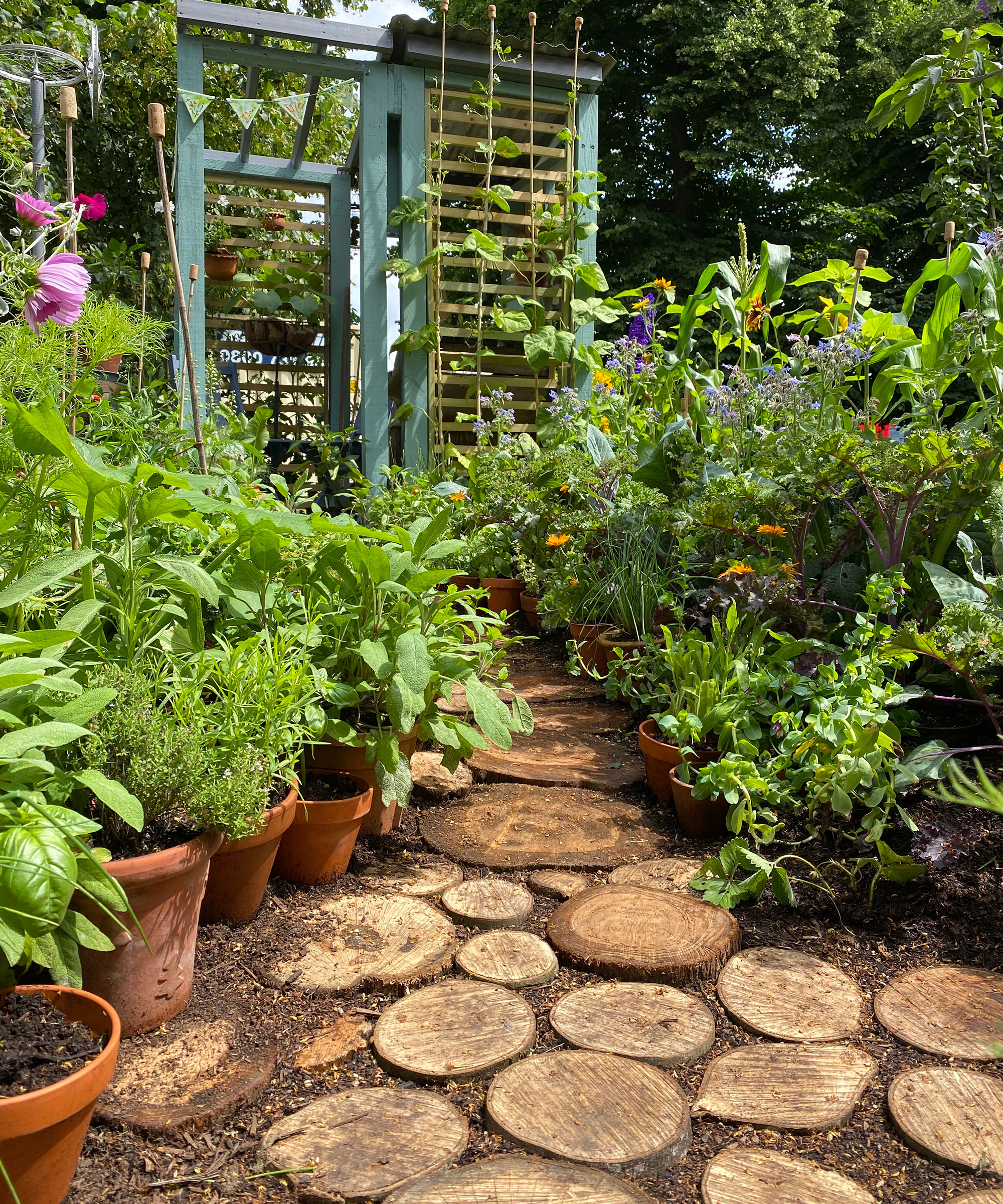
For a natural look, create a pathway from sawn logs
Bring some woodland charm to your garden with sawn log paving ideas. Made from flat cross sections of sawn logs, this is natural paving at its best. Place the circular sections onto a firmed and levelled pathway and arrange as stepping stones, filling in any awkward gaps with smaller discs from younger branches.
Take time to perfect your arrangement, deciding on whether you prefer a spacious stepping stone design – great fun for encouraging children to hop from one to another – or more a closely packed together format for greater stability underfoot. Fill any remaining gaps by landscaping with wood chips, packing them down firmly to help keep the paving in position.
10. Construct and plant up a stumpery
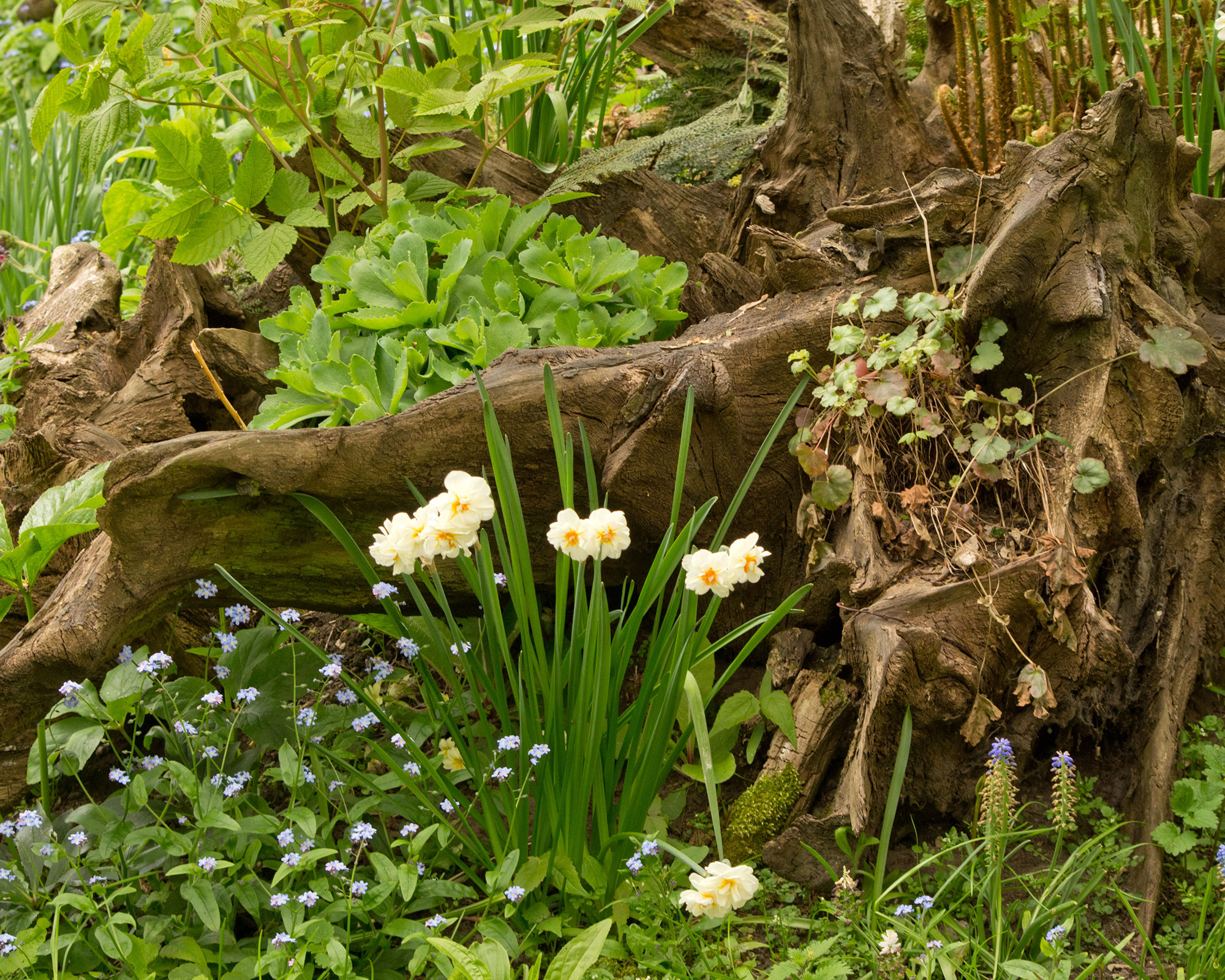
Rewild a corner of your plot with a pretty stumpery
When landscaping with timbers in the garden, it doesn’t mean wood can only be appreciated in its pristine and polished state. Stumperies have been captivating gardeners for centuries with their curious twisting forms, piled high and interplanted with ferns and other woodland beauties.
So if you've been struggling with how to get rid of a tree stump or how to kill tree roots, why not leave them where they are and turn them into an interesting feature in your plot. Hugely popular in the Victorian era, and with a particularly impressive example at Highgrove, Gloucestershire – the private garden of HRH Prince of Wales - these horticultural curiosities are made from artfully arranging decaying tree stumps, roots balls and trunks to create a series of interesting planting pockets. Casting a magical and otherworldly feel, they are a great way to make good use of a damp and shady area of the garden and possess a unique and intriguing charm.
When it comes to choosing plants – nature will over time make her own contributions – but you can speed up the display by opting for ferns such as toothed Deer fern, glossy Hart’s Tongue and the elegant and stately Wallich's wood fern. Delicate seasonal gems such as hardy cyclamen, wood anemones, aconites and snowdrops will also thrive and add year-round interest.
11. Build a wildlife-friendly log stack
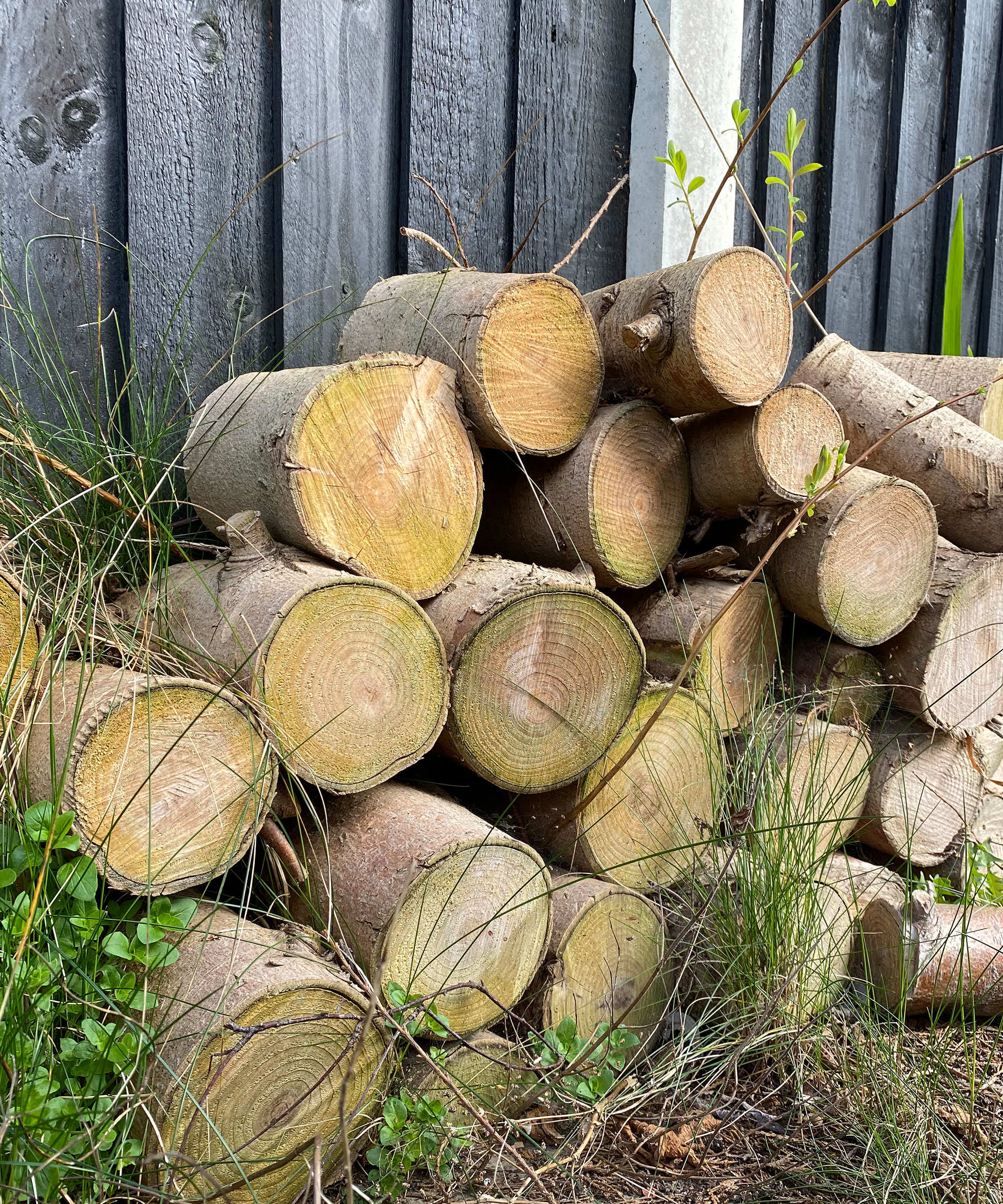
Encourage wildlife to take up shelter in a log pile sited in a sheltered corner of your garden
If you need to chop down a broken tree or branch, save yourself the trouble of a making a bonfire or trip to the rubbish tip by creating a garden log pile. Hugely beneficial for a wildlife garden, not only will the decaying timber attract insects, provide shelter for hibernating toads and hedgehogs but also food and nesting sites for garden birds too.
Create your stack in a semi shady spot as this will enable the sun’s warmth and light to aid the wood’s decomposition without drying it out completely. It will also encourage more insect species to take up home. Place the logs and branches directly on the ground and pack them relatively tightly together to maintain warmth and humidity. Logs of 10cm diameter or larger provide the best habitats but do pack the gaps between with smaller pieces, twigs and other garden clippings for stability. If you are worried about the pile tumbling over, hammer in a stout stake or two, either side of the stack for extra support.
'I created this mini log pile against the fence in my own garden after we had to have a tree chopped down,' says Gardeningetc's editor Beth Murton. 'Tucked away in a sunny, sheltered corner, I was amazed by how quickly a wide range of insects made it their home. We've now added several other small log piles around the garden to encourage even more wildlife to take up residence.'
Over time lichen, mosses and fungi will take hold and native plants such as ragged robin, primroses and wild clematis also move in. For a more immediate interest, plant a rambling rose such as the delicate pink tinged Francis E Lester or the evergreen clematis armandii nearby. This will not only add color but provide essential food for pollinators.
12. Repurpose timber pallets as a living wall
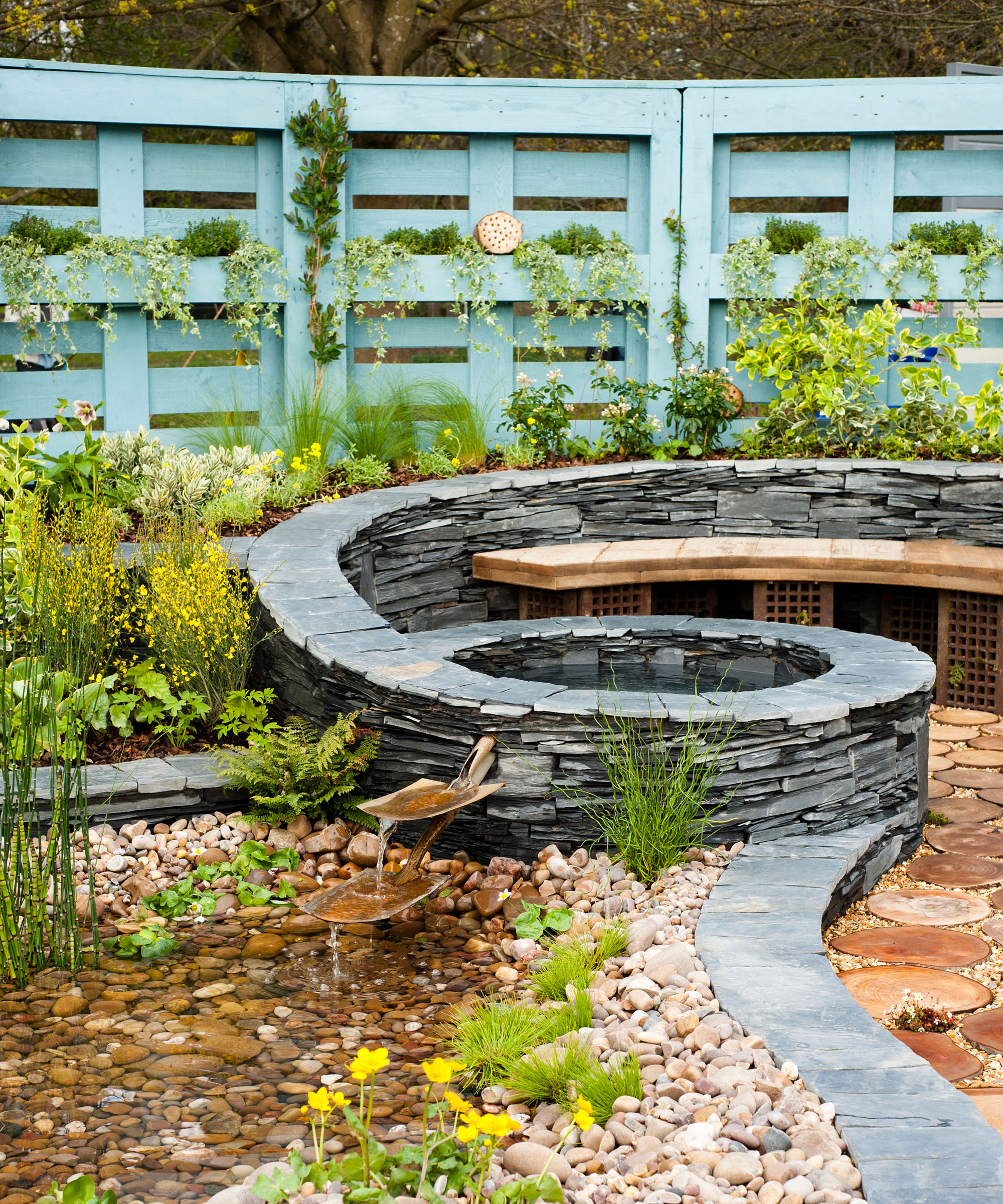
Create inexpensive walls with repurposed timber pallets
Fancy screening an area of your garden or a cozying up a favorite seating spot? Reusing pallets is a simple and speedy solution for landscaping with timbers. Work out exactly where you wish to position your pallet garden wall, the total number of pallets you need and take time to level the ground. A straight line or ‘L’ shape arrangement is the easiest, neatest and quickest to construct.
Stand the pallets in position and support by driving wooden stakes firmly into the ground at each end. Repeat the process, making sure each pallet is butting up closely to its neighbor.
Paint the timber with your chosen color of exterior wood paint and add a planting pocket by slipping pots neatly behind the central timber brace. Alternatively staple a section of landscaping fabric into this gap to form a hammock-style planting gap and fill with compost. Finally plant up with a mix of trailing bedding or sprawling ground cover plants.
What can I make out of landscape timbers?
Affordable, attractive and easy to work with, timber can be used in all manner of ways to add character and structure to your outside space. Here are just a few ideas to try when planning your landscaping with timbers:
- Build a covered pergola
- Retain a sloping garden with timber walls
- Create a deck for lounging
- Build your own DIY treehouse ideas
- Create privacy with wooden screens
- Construct a wooden arch for climbing plants to grow over
- Make raised garden beds
- Lay a log path
- Design a network of wooden walkways
- Cozy up a space with log stack walls
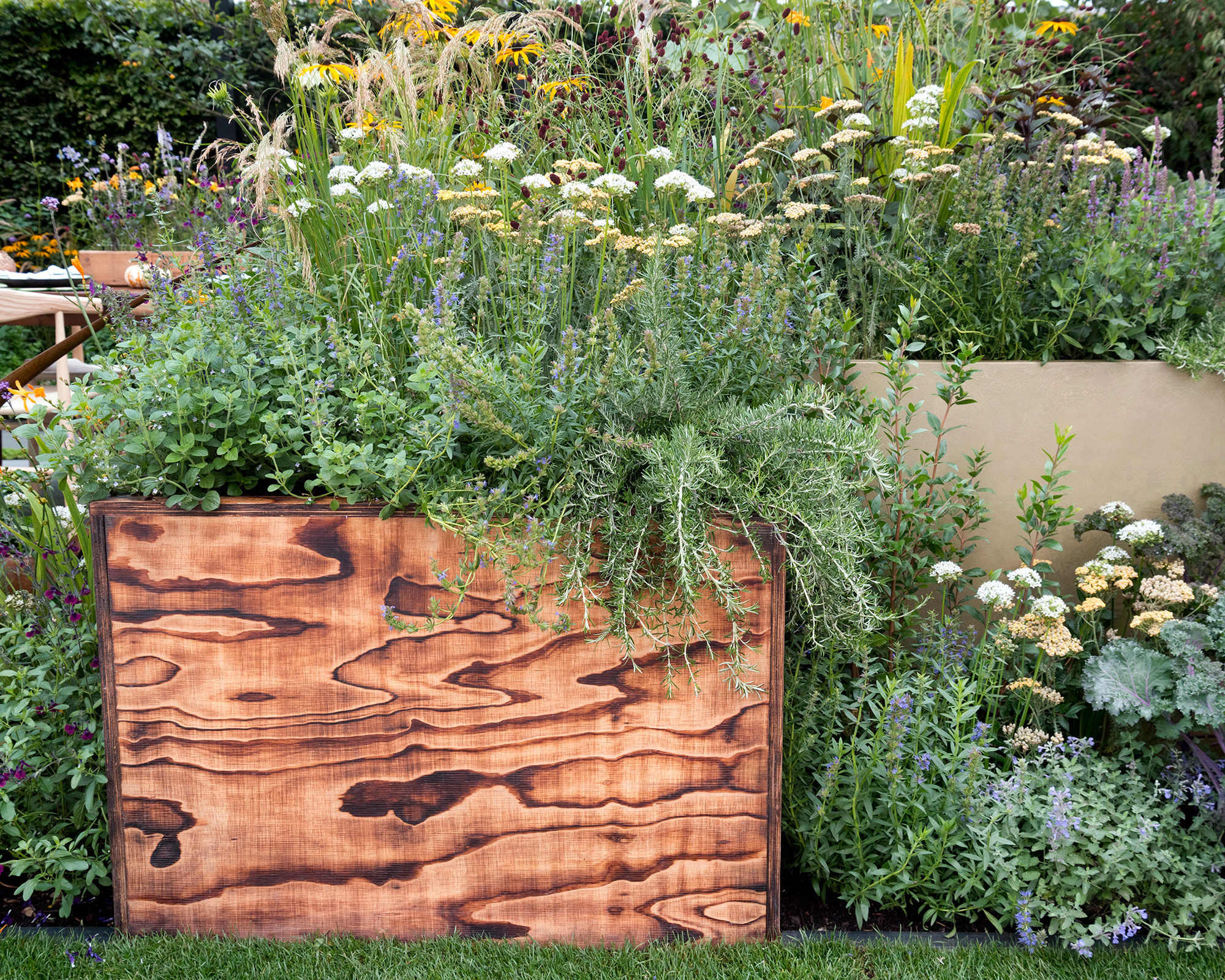
Timber is the ideal material for constructing raised garden beds
How to stack landscaping timbers
Stacking timbers to create a low retaining garden wall is a pretty straightforward task. With some planning and basic tools, you can complete the project in a day. Go for tanalised and pressure treated timber and choose from rounded lengths with two flat sides, square posts or chunky sleepers.
Arrange the timbers as you wish to lay them, staggering any joins and cutting to length where needed. To fix them securely in place, drill holes vertically down through each layer and insert a length of rebar (Steel Reinforcing Bar) that is the height of your finished wall plus half the height again, making sure to drive it fully into the ground until the head is flush with the top of the wall.
There's more advice in our dedicated guide on how to build a garden wall.
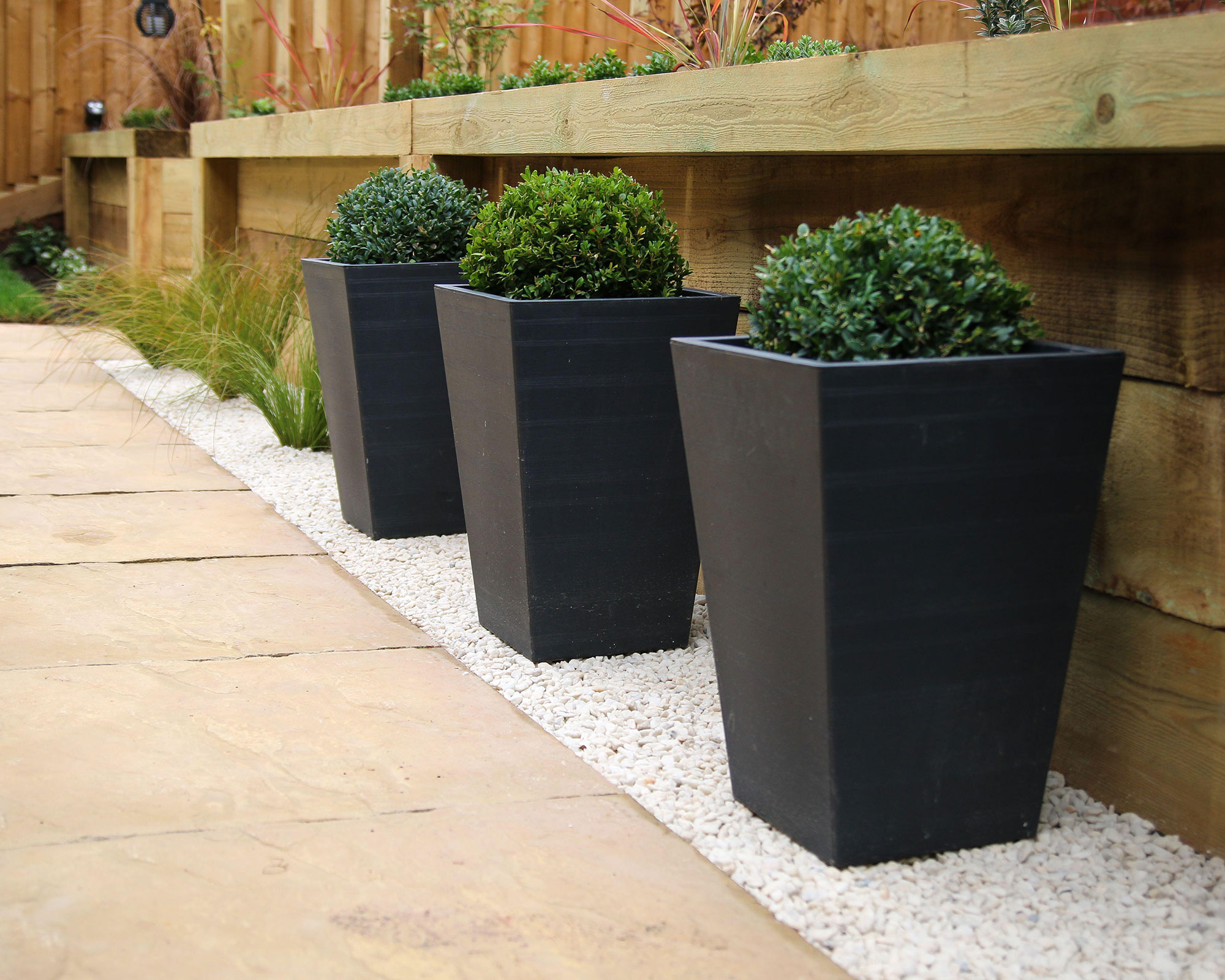
Timber is a smart choice for a low retaining wall

Jill puts her love of plants and all things garden related down to the hours spent pottering around with her Nan and Grandad when she was little. Today she is lucky enough to have a garden of her own in Surrey, England, and spends much of her time writing about them too.
- Beth MurtonEditor, Gardeningetc
